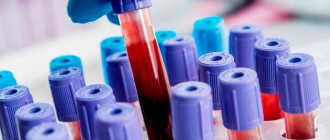- Causes and symptoms of disorders
- Where is the spleen located and how is it examined?
- Is there life without a spleen?
The spleen is a little-studied organ whose functions are not fully understood by medicine. Many generally consider it unimportant and almost superfluous. But in fact, the spleen is part of the lymphatic system and performs important protective functions and participates in the formation of immunity. And to find the cause of many troubles, you need to do an MRI of the spleen.
Causes and symptoms of disorders
It is not very often that this parenchymal organ bothers us, and its inflammation is usually caused by some underlying causes. Since the spleen cleanses the blood of viruses and bacteria, captures and destroys endotoxins, when a large number of foreign agents enter the body, an “infectious collapse” can begin. If it accumulates too much cellular debris (cells killed by cell breakdown), the tissue can become inflamed and cause pain in the stomach and pancreas.
Much more common are traumatic injuries to the abdominal cavity that occur during an impact, a fall from a height, mechanical compression and fracture of the ribs. Injuries manifest themselves as pain (can radiate to the left shoulder blade and shoulder), nausea, general malaise, and repeated loss of consciousness. These symptoms may indicate a ruptured organ and dangerous abdominal bleeding. To accurately determine the cause, you need to do an MRI of the spleen or the entire abdominal cavity as soon as possible after the injury.
Spleen pain
General information
The spleen is an unpaired parenchymal organ that performs immune, filtration and hematopoietic functions, taking part in the metabolism, in particular iron and proteins. The spleen is located in the abdominal cavity, in the left hypochondrium.
On average, the length of the spleen in adults is 80-150 mm, width 60-90 mm, thickness 40-60 mm, weight 140-200 g. The place where arteries and nerves enter the organ and veins and lymphatic vessels exit it is called the hilum of the spleen.
The peritoneum, covering the spleen on all sides, with the exception of the gate and the area to which the tail of the pancreas is adjacent, forms ligaments. Due to them and intra-abdominal pressure, the spleen is fixed.
The spleen is also covered by a capsule. The section reveals numerous trabeculae, which diverge radially from the hilum of the spleen. They contain arteries, veins, lymphatic vessels and nerve fibers. This connective tissue skeleton and a few smooth muscle cells make up the musculoskeletal apparatus of the spleen, capable of withstanding a significant increase in its volume.
Immune diseases
One of the most important functions of the spleen is immune function. Phagocytic mononuclear cells of the spleen capture harmful substances and cleanse the blood of bacteria, viruses and other foreign agents. In addition, lymphocytes and plasma cells of the spleen participate in the immune response, promoting the elimination of antigens foreign to the body.
In some autoimmune diseases (eg, thrombocytopenic purpura, autoimmune hemolytic anemia), autoantibodies are produced in this organ. These may be the following diseases:
- thrombocytopenic purpura;
- autoimmune hemolytic anemia.
Spleen cells produce immunoglobulins. The spleen controls circulating blood cells, primarily aging and pathologically altered red blood cells, which are destroyed by phagocytes of the spleen (filtration function).
The spleen not only destroys, but also accumulates formed blood elements :
- red blood cells;
- leukocytes;
- platelets.
In particular, the spleen contains up to 50% of platelets, which, if necessary, are released into the bloodstream. The spleen (as well as the liver) has no pain receptors; it cannot hurt. Pain occurs only from stretching of its capsule, as a result of rapid enlargement.
Pain in the spleen in diseases
Injuries to the spleen can be open or closed . Open injuries occur when penetrating cut, stab or gunshot wounds of the abdomen or left half of the chest with simultaneous injury to the diaphragm. The causes of closed injuries are most often a blow to the left hypochondrium, a fall on the stomach, compression of the abdomen and left half of the chest with a simultaneous fracture of the lower ribs on the left.
Possible cracks and wounds of the spleen of varying depth and extent, separation of part or the entire spleen. Splenic ruptures are often complicated by bleeding into the abdominal cavity and shock. Immediately after the injury, the following symptoms appear:
- sharp pain in the spleen in the left hypochondrium;
- pale skin;
- cold sweat;
- frequent small pulse;
- drop in blood pressure;
- nausea, vomiting;
- strong thirst.
The victim takes a characteristic position on the left side with the hips brought to the stomach or in a semi-sitting position. Abrasions may be found on the skin of the abdomen . Respiratory excursions of the left half of the abdominal wall are limited, it is painful, tense, the Shchetkin-Blumberg sign is positive. Percussion reveals dullness in the left hypochondrium. With significant accumulation of blood in the abdominal cavity, the zone of dullness of percussion sound moves with a change in the position of the patient’s body.
Pain in the spleen can occur with various diseases. The spleen is involved in the pathological process in many infectious diseases, namely:
- typhoid and typhus;
- sepsis;
- anthrax;
- infectious mononucleosis;
- acute viral hepatitis;
- infectious lymphocytosis;
- cytomegalovirus infection;
- malaria;
- visceral leishmaniasis;
- tularemia;
- listeriosis;
- brucellosis;
- syphilis
Infarction and abscess of the spleen
Splenic infarction can develop as a result of thromboembolism of the branches of the splenic artery or its local thrombosis in leukemia, diffuse connective tissue diseases, a number of infections, atherosclerosis, lymphosarcoma.
The clinical picture of splenic infarction depends on its size. It is important to consider that small heart attacks are asymptomatic. With more extensive lesions as a result of the development of perisplenitis (inflammation of the spleen capsule), pain appears in the spleen in the left hypochondrium, often radiating to the back and intensifying with inspiration. A splenic abscess can develop due to bacteremia due to endocarditis or salmonellosis, as well as due to infection of splenic infarctions and subcapsular hematomas; for hemoglobinopathies, sickle cell anemia, rupture of a subdiaphragmatic abscess into the spleen.
Symptoms are often characterized by:
- fever;
- pain in the upper left half of the abdomen and chest;
- Tension of the muscles of the anterior abdominal wall.
Other diseases of the spleen
Splenic tuberculosis may be a manifestation of miliary tuberculosis. Isolated tuberculosis of the spleen is not very common; it occurs with scant clinical symptoms. Echinococcus is one of the parasitic diseases of the spleen. The most common lesion is unilocular echinococcus. Possible rupture of the echinococcus bladder and contamination of the abdominal cavity with daughter scolex. Recognizing the disease is quite difficult. Ultrasound and computed tomography play an important role in diagnosis. Primary tumors of the spleen, both benign and malignant, are quite rare. Of the benign tumors found in the spleen:
- hemangioma;
- lymphangioma;
- fibroma.
Among primary malignant tumors of the spleen, lymphomas are most often observed . At the beginning of the development of spleen tumors, as a rule, there are no clinical manifestations. As tumor nodes and the organ enlarges, patients feel heaviness and dull pain in the spleen in the left hypochondrium.
If you have severe pain in the spleen, contact your physician. Having established a preliminary diagnosis, the therapist will refer you to the appropriate professional: an infectious disease specialist, hematologist, traumatologist, surgeon or oncologist. If treatment does not give the expected results, then the issue is resolved through surgery. Many doctors recommend eating right and leading a healthy lifestyle to prevent such serious consequences.
Where is the spleen located and how is it examined?
The small organ is located behind the stomach in the left hypochondrium, so checking its condition is quite difficult. For research, palpation, x-rays, ultrasound and more advanced tomography methods are used. The advantage of MRI is that the diagnosis gives the most complete picture of the location, size, and condition of the organ tissues. In addition, this is the safest method that does not cause any harm to the body. You can undergo examination at least every day if the financial side of the issue is not an obstacle.
But it should be noted that stereotypes about tomography being undemocratic are greatly exaggerated. The price of an MRI of the spleen starts from 2,500 rubles (in Moscow, and even cheaper in the regions). On our website MRT-kliniki.ru you can find a list of all diagnostic centers, compare costs, choose clinics with preferential conditions or promotions and sign up for an examination with a discount of up to 50%.
Functions
- Participation in lymphopoiesis. The organ produces a number of leukocyte cells (lymphocytes) and is capable of capturing bacterial cells, protozoa, and foreign bodies. The spleen is also involved in the synthesis of antibodies that cleanse the body of foreign pathological agents.
- Depot of blood cells. Here, the accumulation of a third of all platelets (cells responsible for blood clotting) occurs.
- Filtration function. The organ destroys old blood cells (platelets and red blood cells), and therefore takes part in iron metabolic processes.
- During the first two months of fetal life, the gland is the main organ responsible for hematopoiesis. From the third month this work is transferred to the bone marrow.
Ultrasound of the spleen in adults: what it shows, preparation for the procedure
Ultrasound of the spleen in adults
The spleen is an organ responsible for the protective properties of the body. With the help of the spleen, the immune system and metabolism are formed. If there is a malfunction in its operation, this leads to disruption of many important systems of the human body. In this case, diagnostic procedures are prescribed, namely ultrasonic examination. What does it show?
- Ultrasound of the spleen in adults is one of the safest diagnostic methods.
- It gives an almost complete, and most importantly, objective picture of the health of this organ.
- Ultrasound allows you to determine the size and function of the spleen.
- Both adults and children from an early age can be subject to such examination.
- There is no risk in this procedure.
The spleen is a kind of filter of the body that absorbs bacteria and diseased blood cells, and other pathological particles that enter the body or are produced in it.
An ultrasound is done to determine a number of abnormalities. Reasons to do an ultrasound include:
- Determination of organ size or abnormalities of its development
- Detection of neoplasms
- Pain in the lower back or side
- Pain in the left side of the back
- Pain in the shoulder blade
- Nausea
- Reduced blood pressure readings
- Liver diseases
- Injuries
- Diseases of the blood or lymph nodes
How to prepare for the ultrasound ? Here is the answer:
- An important task is to prevent excess gas formation. A loaded bowel may make examination difficult.
- Three days before the ultrasound you should follow a small diet. Legumes (including peas and beans), sweet foods (confectionery sweets), fresh white bread and vegetables that have not been thermally processed should be excluded from the diet.
- Nine hours before the ultrasound , you should stop eating altogether. Sometimes, to improve the digestion of food, doctors prescribe the evening before the procedure to drink a Filtrum or Smecta . This is necessary in order to neutralize the gases.
The ultrasound examination itself is carried out strictly on an empty stomach, with the exception of diabetics. If you have diabetes, your doctor will recommend how to go about this procedure correctly and what you can eat and when.
Spleen in children: size of the organ, treatment if the spleen in a child is enlarged?
Spleen in Children
As children grow older, the normal size of the spleen varies in children. Usually, an increase in this organ in a baby indicates a specific physiological phenomenon, but it is important to exclude pathologies. The dimensions of the organ are described below.
- The process of formation of this organ begins approximately 5 weeks after conception.
- The spleen of a small baby is round in shape and weighs about 9 grams .
- By the first year of life it increases 3 times.
- Much depends on the child's growth. If the baby is between 60 and 70 centimeters , then the diameter of the splenic vein will be 3.3 mm , the length of the organ 54.6 mm , the width will be 26.2 mm , and the thickness will be 24.3 millimeters .
- With a height of 100 cm, the diameter of the splenic vein will already be 4.2 mm , and with a height above 170 cm - 6.1 . Accordingly, the size of the gland itself will increase. That is, a lot depends on the child’s growth and age.
An enlarged spleen occurs when there are rapid changes in the growth of the child's body, or there may be diseases. Ailments due to problems with the spleen are as follows:
- Abscesses
- Bacterial infections
- Problems with the blood-forming organs
- Liver problems
- Tuberculosis
- Syphilis
- Problems in metabolic processes
- Heart defects
- Oncology
- Cysts
- Measles
- Rubella and more
Typically, an enlarged spleen in a child is accompanied by the following symptoms:
- Diarrhea
- Nausea
- Pain in the left hypochondrium
- Increasing temperature
- Increased fatigue
- Apathy
- High sweating at night
Diagnostics includes:
- Ultrasound
- Blood, urine and stool tests
If the spleen is enlarged and there are the symptoms described above, you should consult a doctor.
Worth knowing: Doctors in this case will take a wait-and-see approach, since the child’s body changes quickly. However, if the symptoms do not go away for a long time and the baby’s well-being worsens, then there is a serious pathology. You will need special medications, or even surgery.
The diet of such a child should include the following foods:
- Bird
- Beef
- Fish
- Beef and chicken liver
- Cereal porridges and soups with milk
- Buckwheat
- Boiled and baked potatoes
- Chicken eggs
- Fresh vegetables and fruits
Advice: The main diet should consist of these foods. Do not allow your baby to eat a lot of sweets and fried foods. It is also worth protecting your child from eating fatty foods.
Prevention consists of scheduled vaccination against various diseases. It is also important to be careful when traveling to exotic countries. Do not give your baby unfamiliar fruits or other foods. It should be simple and useful. Introduce moderate amounts of physical activity into your life.
Physiology.
Galen considered the spleen an organ “full of mystery.” The ancient Greeks and Romans are known to have removed runners' spleens to increase their running speed. The functions of the spleen are not fully understood. For a long time it was considered an endocrine (without excretory ducts) gland. Since there is no reliable data on the secretory activity of the spleen, this theory had to be abandoned, although recently it has to some extent received a second life. The spleen is now credited with hormonal regulation of bone marrow function.
Also on topic:
COMPARATIVE ANATOMY
In the early stages of fetal development, the spleen serves as one of the hematopoietic organs. By the ninth month of intrauterine development, the formation of both erythrocytes and leukocytes of the granulocyte series is taken over by the bone marrow, and the spleen, starting from this period, produces lymphocytes and monocytes. In some blood diseases, however, foci of hematopoiesis reappear in the spleen, and in a number of mammals it functions as a hematopoietic organ throughout life.
In an adult, the spleen performs several functions. As part of the reticuloendothelial system, it phagocytizes (destroys) dead blood cells and platelets, and converts hemoglobin into bilirubin and hemosiderin. Because hemoglobin contains iron, the spleen is one of the richest iron reservoirs in the body. As a lymphoid organ, the spleen is a major source of circulating lymphocytes, especially in adolescence and young adults. In addition, it acts as a filter for bacteria, protozoa and foreign particles, and also produces antibodies; People without a spleen, especially young children, are very susceptible to many bacterial infections. Finally, as an organ involved in blood circulation, it serves as a reservoir of red blood cells, which in a critical situation are released back into the bloodstream.
The main methods of treating an enlarged spleen
Therapeutic measures are aimed at eliminating the reasons that caused the enlargement of the spleen. As a rule, therapy is complex. The patient is prescribed antiviral or antibacterial drugs, anti-inflammatory drugs, and vitamin supplements.
Irreversible changes require surgical intervention. This method is a last resort measure used in the absence of results from the treatment. The affected organ is removed.
After the operation, the patient continues to lead his usual lifestyle. But without a spleen, a person is most susceptible to attack by harmful microorganisms and viruses, and to the action of toxins. In order to protect your health, after surgery you must adhere to proper nutrition, get rid of bad habits, and avoid heavy physical activity.
Recovery is greatly facilitated by adherence to a special diet, which is recommended to be followed both during drug treatment and surgical intervention. Its main principle is the rejection of unhealthy foods: alcohol, fried, fatty, salty, smoked, etc.
It is recommended to include various cereals, light vegetable soups, lean meats and fish, vegetables, and fruits in your menu. It is necessary to drink plenty of clean water. It helps remove harmful toxins from the body.
Meals must be fractional. It is recommended to eat small meals four to five times a day. A balanced diet helps our body recover faster. Without a diet, it is quite difficult to get rid of this disease.
Traditional medicine also comes to the aid of conservative treatment methods. Propolis and special herbal preparations are considered effective means of eliminating splenomegaly.
Timely detection and treatment of the disease helps to avoid various complications.
Complications
A malignant tumor can spread to the brain, spinal cord and cause neurological complications. Compression of the nerves leads to pain. Lesions in the lymph nodes, which are located inside the chest, can lead to coughing, difficulty breathing, and chest pain.
The spleen is not a vital organ, so after it is removed, a person can live as before without experiencing any symptoms associated with its absence. However, immune defenses are reduced to some extent and the patient becomes more vulnerable to infections.
Prevention
The spleen, previously considered an insignificant organ, when enlarged can cause damage to the entire functioning of the body. Therefore, it is better to carry out prevention to avoid problems:
- Avoid injuries in the abdominal area;
- Exercise. 10-12 am is the best time to study. At 22:00 the organ’s rest period begins, so it’s better to go to bed earlier;
- a gentle diet without fatty and spicy foods that irritate the liver. The liver and spleen work together;
- If you notice discomfort in the left side, you need to make an appointment with a doctor.
Treatment of spleen cancer
Treatment approaches depend on the type and stage of the malignant tumor. For example, with lymphomas, if there are no symptoms, it is enough to go to the doctor for examinations and take blood tests every six months. If, for example, a metastasis of a solid tumor is detected in the spleen, active treatment is required. Below we will consider the basic principles of treatment of lymphomas as the most common tumors of the spleen.
Surgical interventions
The main type of treatment for splenic lymphoma is organ removal, splenectomy. Statistics show that most patients who undergo such surgery do not require any other types of treatment over the next five years.
Chemotherapy
In some cases, chemotherapy is used - drugs that destroy tumor cells. Some are administered intravenously, others are taken in tablet form. The type, dosage and schedule of administration of chemotherapy drugs are selected depending on the type and stage of the tumor.
Studies have shown that rituximab, a drug from the group of monoclonal antibodies, can be an effective alternative to splenectomy for lymphomas. It helps to get rid of symptoms and avoid complex surgery.
Radiation therapy
In some cases, radiation therapy is used to combat lymphomas. X-rays and proton therapy are used.
Radiation therapy is used as an independent type of treatment to combat tumors in the early stages. In later stages and with aggressive tumors, it is combined with chemotherapy. In addition, radiation helps combat symptoms caused by metastases.
Stem cell transplant
Stem cell transplantation (red bone marrow transplantation) is indicated in cases where the tumor cannot be treated with chemotherapy and radiation therapy. High doses of chemotherapy or radiation are given to suppress the patient's own red bone marrow, and then red bone marrow stem cells, either their own or a donor's, are injected into the patient's blood.
When is it necessary to do an ultrasound of the spleen?
Ultrasound diagnostics is a safe procedure performed by highly qualified medical specialists. with over 15 years of experience. Ultrasound of the spleen can be performed many times without any harm to health. Using new high-precision equipment in our center, ultrasound can be performed to monitor the treatment process or the dynamic development of a pathological formation.
The method is effective for:
- probable organ damage;
- diagnosis of neoplasms of various etiologies;
- determining the inflammatory focus;
- identifying anatomical abnormalities;
- disorders of the hematopoietic system;
- chronicity of the process in the lymphatic system.
Splenomegaly,
or enlargement of the spleen is a characteristic response of the organ to many pathological conditions. Splenomegaly may be associated with enlarged lymph nodes, ascites (fluid in the abdomen), jaundice, leukopenia (decreased white blood cell count), fever, enlarged liver, or severe anemia. It is observed in many cardiovascular diseases; for many infectious diseases - malaria, typhoid fever, smallpox, measles, syphilis, meningitis, scarlet fever, etc.; for blood diseases - leukemia, hemolytic jaundice, chronic hemolytic anemia, usually congenital. Sometimes an enlarged spleen occurs in Hodgkin's disease; It reaches enormous sizes in chronic myeloid leukemia. Metabolic disorders, especially fat metabolism, are also often accompanied by splenomegaly. Many liver diseases affect the condition of the spleen. This primarily concerns Banti syndrome, in which cirrhosis of the liver is accompanied by congestive splenomegaly and anemia. With a hereditary disease - Gaucher disease - there is a disorder of fat metabolism and splenomegaly.
Since splenomegaly is only a manifestation of some other disease, treatment should be aimed at the primary cause. Removal of the spleen is indicated in rare cases; sometimes it is performed in diseases associated with increased destruction of red blood cells or platelets, in particular in hemolytic jaundice, thrombocytopenic purpura, Banti syndrome, but even then an improvement in blood counts can be expected only in 30–60% of cases.
See also LYMPHATIC SYSTEM.
Anatomy.
Also on topic:
HUMAN ANATOMY
The spleen is made up of several types of tissue. Embryonically, it originates from the middle germ layer, the mesoderm. A certain number of original mesenchymal cells remain in the spleen throughout life, while the rest turn into lymphoid and reticuloendothelial cells. The pulp (pulp) of the spleen consists mainly of the latter, and lymphoid cells are grouped into lymphoid formations, the so-called. Malpighian bodies. The spleen has an abundant blood supply and its color is dull purple. In addition to the peritoneum (serous membrane), it is covered with a dense elastic fibrous capsule mixed with smooth muscle fibers. The capsule continues into the thickness of the organ in the form of crossbars - trabeculae, forming the skeleton of the spleen and dividing it into lobules. The spleen is directly connected to the portal vein system (carrying nutrient-rich blood from the gastrointestinal tract to the liver) and the systemic circulation.







